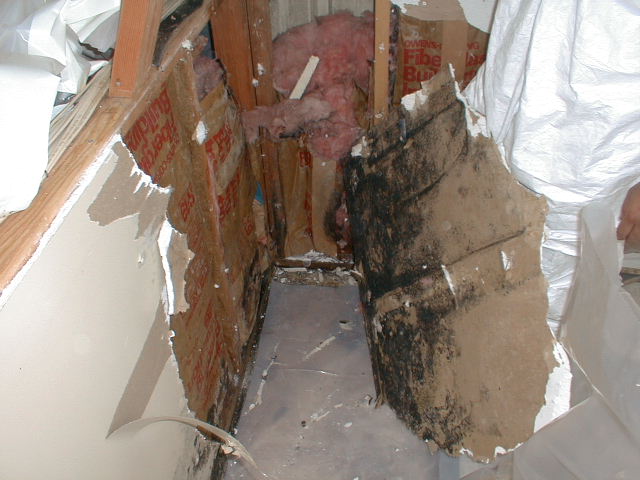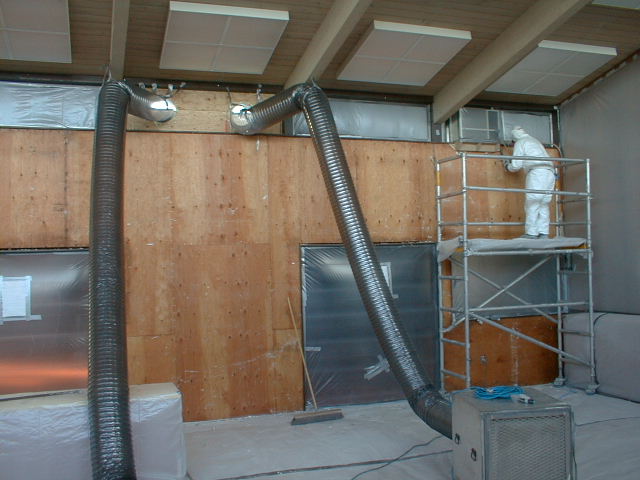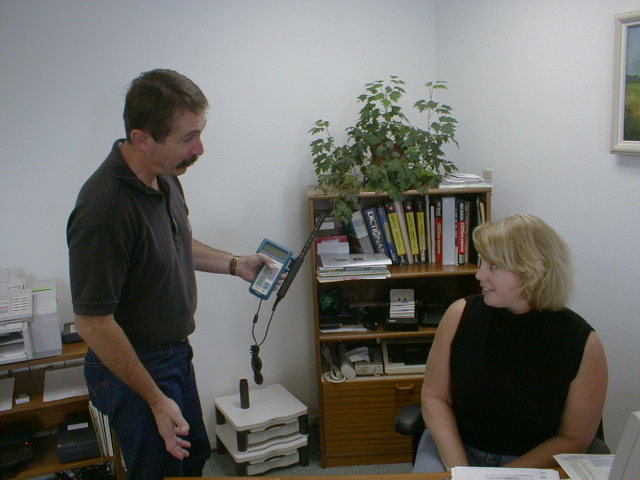California Industrial Hygiene Services, Inc.
Indoor air quality (IAQ) issues (sometimes referred to as "sick building syndrome," and "building-related illnesses") are not a new concern. However, increased public awareness, scientific findings regarding potential health effects, and improved assessment techniques have greatly affected this area over the past decade. To effectively assess and solve IAQ issues requires experienced professionals with knowledge in the areas of public health, employee and public relations, microbiology, chemistry, toxicology, building design, sampling and other assessment techniques. The certified professionals of CIH Services have investigated and resolved indoor air quality issues for more than 20 years.


Examples of IAQ issues frequently addressed by CIH Services:
- Occupant concerns regarding health symptoms or illnesses they perceive are related to poor indoor air quality
- Widespread reports of health problems or concerns resulting in high absentee rates or refusal to occupy a building or area within a building
- Employee and public relations issues related to indoor air quality concerns
- Odors or other conditions that are disagreeable to occupants
- Actual, or suspicion of, mold or bacterial growth/contamination on building materials, building contents, or in building ventilation systems
- Concerns from occupants about emissions emanating from neighboring facilities that may contaminate their environment
- Concerns regarding potential exposure to hazardous components in building materials
- Potential liability concerns of building owners and buyers, employers, insurers
High Quality Services Reduces Potential Liabilities
CIH Services follows current guidelines and practices to provide services of the highest quality using only experienced, certified personnel. Presently, there is little regulatory guidance pertaining to IAQ. However, CIH Services uses current, consensus guidelines and protocols recognized internationally. These guidelines and practices are developed by professional organizations and government agencies such as the American Conference of Governmental Industrial Hygienists (ACGIH), American Industrial Hygiene Association (AIHA), United States Environmental Protection Agency (USEPA), New York City Department of Public Health, and the American Society of Heating, Refrigerating and Air-conditioning Engineers, Inc. (ASHRAE).
The success of CIH Services in resolving IAQ issues is the result of following a proven, systematic approach that involves the following steps:
- Determine location, timing, and specific symptoms and health effects associated with the IAQ issue, if appropriate
- Collect other pertinent data and information and perform an on-site investigation to determine possible indoor contaminants or other factors that could be related to the concerns
- Collect material, air, and surface samples for analysis as indicated by the investigation
- Evaluate data and information to determine appropriate response measures
- Develop specifications or plans for response measures and provide technical oversight to insure measures are adequate and performed properly
- Perform a follow-up evaluation to verify the issue is resolved
Success in resolving IAQ issues may require the expertise of other disciplines. In addition to our Certified Industrial Hygienists, CIH Services has assembled an experienced team that includes engineers, chemists, statisticians, microbiologists, occupational physicians, university researchers, and public relations experts.


Examples of On-site Services:
- Thorough investigations to determine factors affecting indoor air quality
- Measurement of carbon dioxide levels and other parameters to determine the adequacy of the building ventilation system
- Measurement of volatile organic compounds (VOCs) using specialized gas chromatography/mass spectrophotometer (GC/MS) analytical techniques to detect low concentrations of airborne contaminants
- Lead and asbestos related services
- Evaluation of newly constructed buildings to determine air quality prior to occupancy
- Evaluation of the type and extent of visible and hidden mold contamination. CIH Services uses state-of-the-art methods including fiberscope technology to view hidden areas, such as within wall cavities. This is in lieu of outdated techniques that require destruction or removal of walls or other components for adequate viewing
- Bioaerosol (airborne mold and bacteria) monitoring using culturable and non-culturable techniques
- Measurement of microbial volatile organic compounds (MVOCs)
- Measurement of moisture content in building materials to determine likely locations of mold growth
- Assessment of surface contamination
- Preparation of technical specifications and plans for remediation and the implementation of other appropriate measures to address sources of indoor air quality problems
- Oversight of remediation activities to insure proper and effective methods are utilized
Benefits our clients have realized from our IAQ services:
- Improved employee/occupant health and sense of well being
- Improved communication and relationships between management and employees or building owners and occupants
- Improved employee moral and lower absentee rates
- Reduction in complaints and the time and resources allocated to address these issues
- Prevention of IAQ problems, and reduction of associated costs and liabilities by preventative measures, early detection, and timely response
Specialized services related to insurance and legal issues:
- Provide expert legal support to attorneys
- Assistance with workers' compensation claims
- Assistance with litigation claims
- Third party investigations
- Correlation of moisture intrusion issues to mold growth
- Assessments of buildings prior to occupancy or purchase
- Preparation of thorough documentation and professional reports
- Reduction of potential future liabilities by providing specifications and oversight of remediation projects


